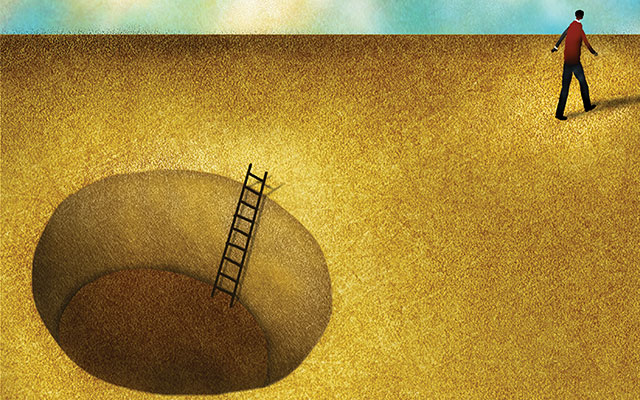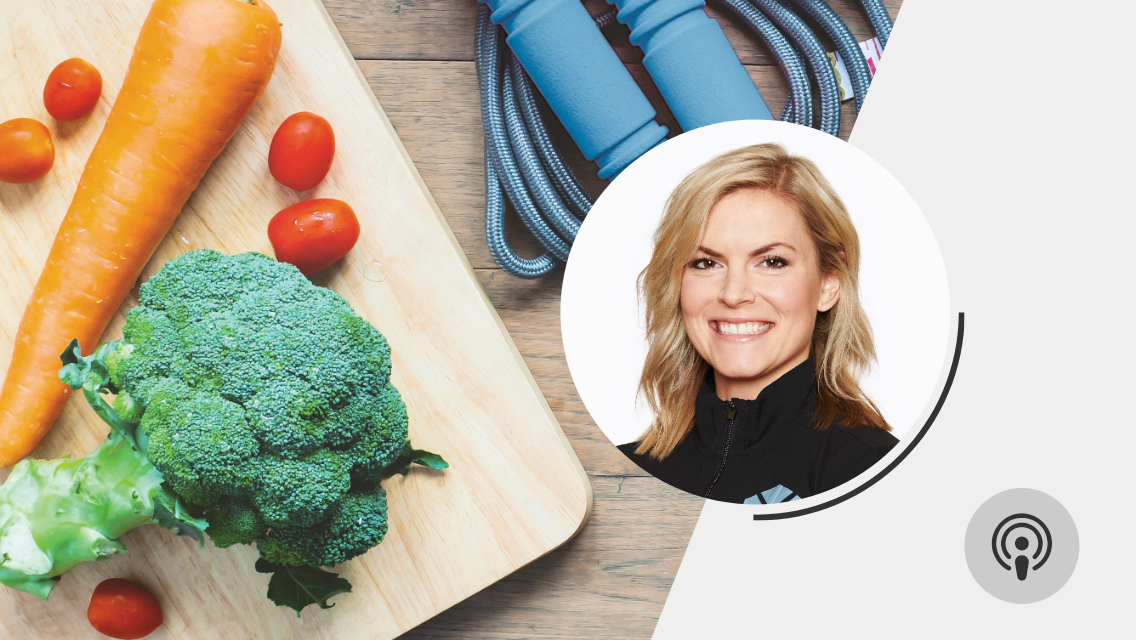It starts innocently enough. You enjoy a few weeks of success with a newly formed healthy habit, and then you start to relax a bit. One day your vigilance falters, you make a tiny exception, and you break your new habit. Then you do it again. Then again, and soon you’re right back to your old ways.
Even if you’ve been on your new path for a while, relapse into old behavior is not just a possibility — it’s a probability. Forget the notion that it takes 21 days to form a new habit. That idea came from a plastic surgeon in the 1950s who observed that it took 21 days for his patients to get used to their new nose jobs! Anyone who’s tried to institute significant behavior change, like joining a daily 6 a.m. cycle class or quitting smoking, knows realistically they will have to resist that urge to sleep in or light up for a long time.
Although it’s frustrating, falling back on old behaviors isn’t a sign of failure or doomed effort. When you embrace your role as the designer of your life, you can see relapse as a natural part of building behavior change that lasts.
Paving Habit Pathways
Your habits are supported by a fully wired neural network in your brain. Your thoughts and behaviors (as well as your environment and many other factors) influence how that network of neurons, or brain cells, has strengthened its interconnections over the years.
But that isn’t the final word. At any point, you can actively start a new behavior and sprout new neural wiring. You can stimulate neuroplasticity — the phenomenon that allows your brain to build new pathways.
Just as a footpath emerges in grass the more you walk along the same route, a new neural pathway begins to appear the more often you practice a new behavior. Over time, your brain reinforces this pathway and even protects it by growing a fatty white coating called a myelin sheath, which is like paving the path.
Myelination makes the signaling along this network — and therefore your new behavior — faster and more automatic. Once you’ve established a new behavior, your brain now has two equally fast options for picking a path of action: your old habit path (which is still well established and paved) and your new habit path.
Since the old path never completely vanishes, sticking to a new behavior always entails a choice. I found a perfect example of how hard it is to continually make the new choice when I met “Nora.”
Nora had been working to change her codependent behavior in interactions with her 19-year-old son, who was a heavy marijuana user. Consulting with a therapist, Nora had made and followed a plan to move her son out of the house, to require that he get a job, and to say no to him when he wanted to borrow money. She had executed this plan flawlessly — until recently.
“The holidays were approaching and my son lost his job,” Nora told me. “I just couldn’t see him out on the streets when the rest of us were enjoying the season, so I let him move back in. Two months later, here I am back at square one! I feel like such a failure for going back to my old pattern.”
Nora’s well-established codependent neural network was like an interstate highway. In comparison, the network she was building to push her son out of the nest was at the gravel-road stage.
Research has shown that it can take a year or more to build a fully myelinated, “paved highway” neural network. To establish an alternative route just as smooth and fast as her old codependence highway, Nora still needed many months of consistent effort and practice.
Designing Your Way Back
When two behavior pathways com-pete for your action, your choice often comes down to how you feel at the moment. If you’re feeling supported, strong, and empowered, the new healthy habit wins. If you’re feeling stressed, weak, and tired, the old habit may resurface.
Drawing on behavior-design principles (see the first article in this series “The Power of Process“), you can work toward long-term success by learning to quickly recognize — and recover from — a habit relapse.
From a design perspective, there is no such thing as failure; there is only curiosity about what didn’t work and a plan for the next version of the solution. So, from this point of view, relapse is a necessary stage in the process, not a final result.
The next time Nora works with her son, she could spend time with him outside the home rather than inviting him back in. She could in this way guide him toward independence without enabling him.
As you move forward in your path, remind yourself that you are not bad or alone in your relapse: We all experience this as part of our behavior-change journey.
Instead, see relapse as an indicator of progress and a helpful source of insights that can reveal how to reach your goals and learn new life-design skills along the way.
Putting It Into Practice
Want to bounce back from a relapse, or minimize future setbacks? Try this two-step life-design exercise.
Step 1: Reflect on a behavior change you would like to make or are working toward now. Then answer the following questions:
• What steps or processes will you follow to make this change?
• What old habits and behaviors might compete with this new behavior? Which of these do you expect to reemerge first (because they are the oldest or the most routine or the most addictive)?
Step 2: Design at least one solution or bounce-back strategy for dealing with a relapse. For example, you could try the following:
• Recognize the relapse for what it is so you can more quickly move on.
• Substitute a less harmful behavior that still meets the needs that drove the old behavior.
• Change your environment, so relapse is less likely to occur.
This article originally appeared as “Relapse Recovery” in the March 2016 issue of Experience Life.




This Post Has 0 Comments